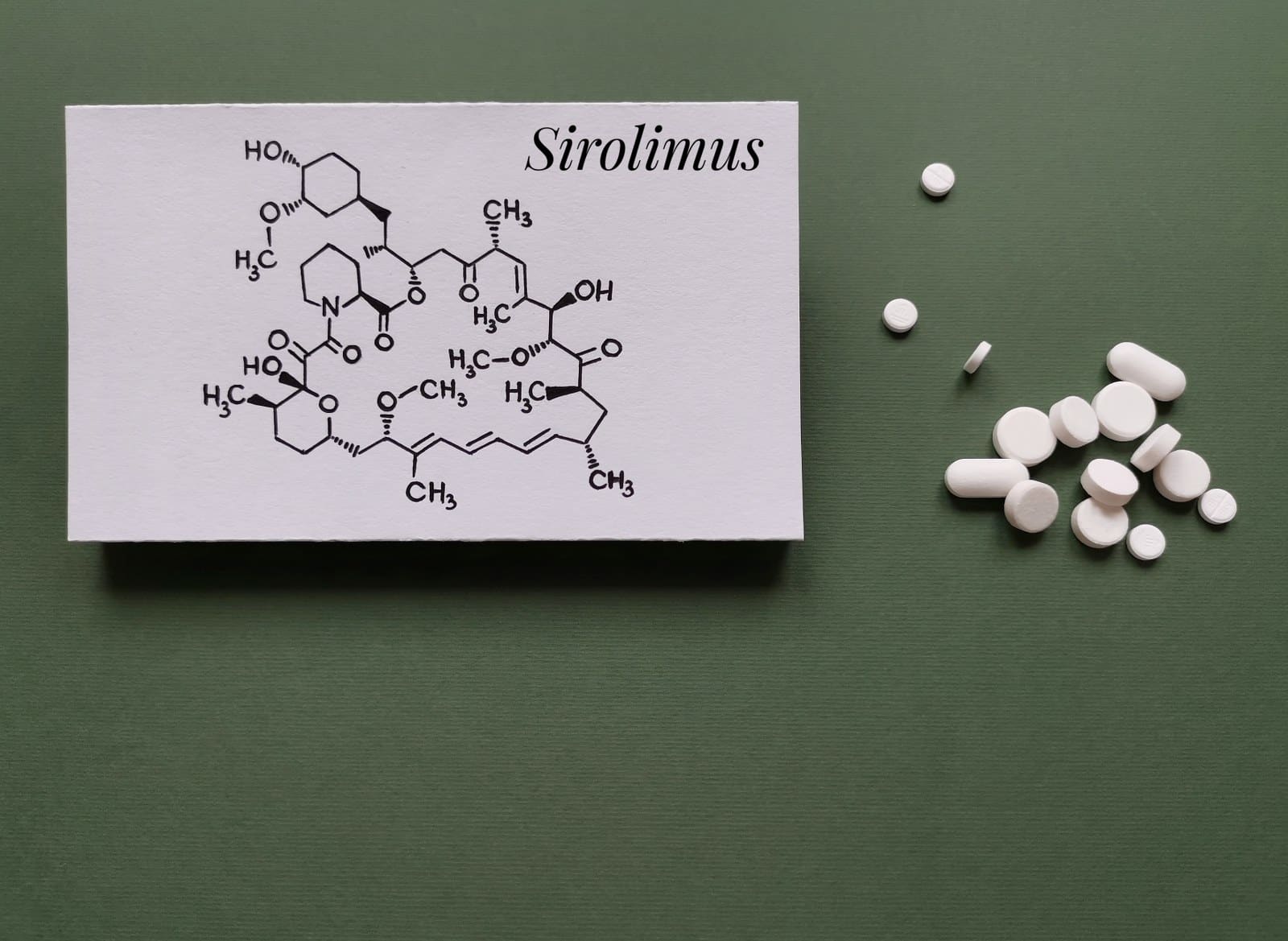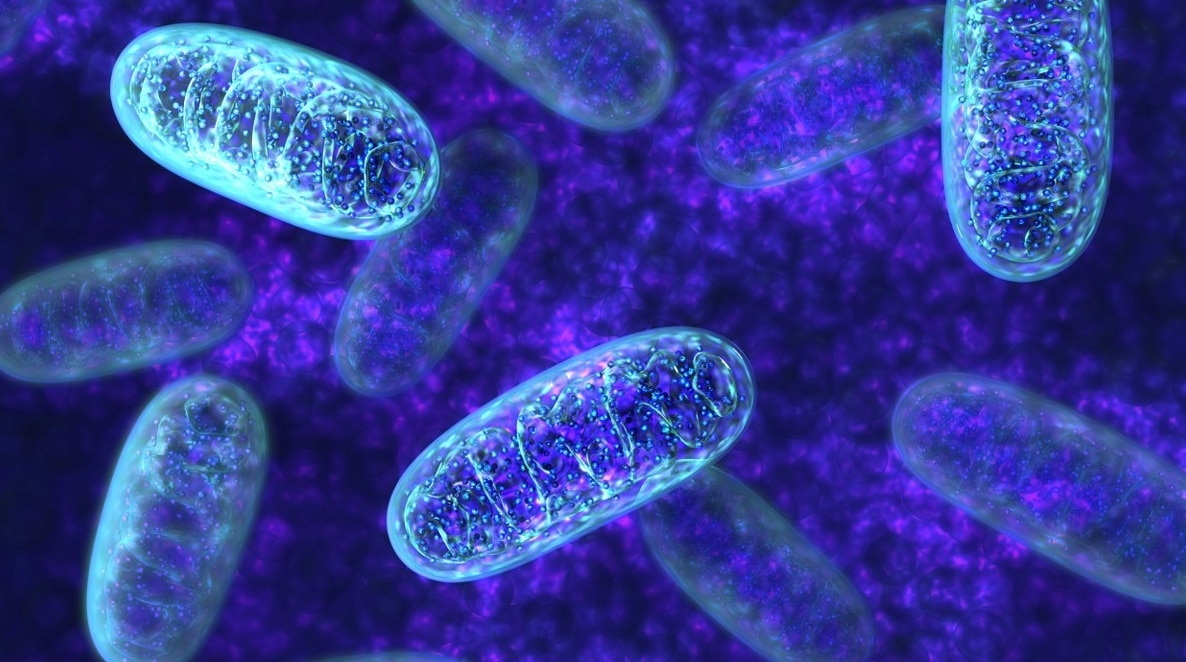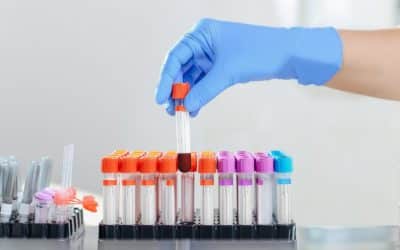
Rapamycin can slow aging and extend lifespan in various ways.
1. Rapamycin is an mTOR inhibitor
First, rapamycin is an mTOR inhibitor. mTOR is a protein found in our cells. It’s an important “nutrient” sensor which recognizes nutrients, mainly amino acids (but mTOR can also sense glucose, cholesterol and oxygen levels). If there are a lot of nutrients, especially amino acids, present in our blood and cells (because we ate a big steak for example, which consists of proteins that are made up of amino acids), these activate mTOR. mTOR then revs up the production of protein (mainly, but also of DNA and lipids), and increases metabolism and growth in our cells.
This all makes sense. If there are a lot of nutrients (e.g. amino acids) available, this means there are a lot of building blocks and energy available for our cells, so the cells rev up their metabolism and growth.
However, this also has a downside. This activation of metabolism and growth accelerates aging of cells. Cells start to produce more proteins, which can clump together faster, contributing to aging (accumulation of proteins is one of the causes of aging).
More scientifically speaking, mTOR activates various important proteins (by putting a phosphate group on them) involved in protein production, like S6K and 4E-BP (eukaryotic translation initiation factor 4E-binding protein).
Another consequence of having lots of nutrients available is that cells will maintain themselves less well. They let themselves go. Why should they be frugal and painstakingly recycle their components and maintain and repair themselves, when there are enough building blocks and energy available? No need to skimp on repair, recycling and maintenance with an abundance of resources.
Compare it with money; some people who suddenly have lots of money splurge on all kinds of things they don’t really need, spending it quickly; living the fast life. On the other hand, some people who have little money will live more frugally, be careful what to spend, and rather recycle stuff for their home and repair things instead of buying new things.
How does mTOR activation cause less maintenance? It suppresses autophagy, which is an important maintenance and recycling process. Autophagy is the breakdown (digestion) and recycling of proteins and other cellular waste material. mTOR-induced suppression of autophagy causes more build-up of (damaged) proteins, old and damaged cell components (like mitochondria), and other problems. If you eat lots of protein, especially animal-based protein, mTOR is activated and autophagy is suppressed. mTOR inhibits autophagy by phosphorylating proteins involved in autophagy, like ULK1.
The opposite happens when we are eating little (e.g. during fasting): autophagy is then upregulated, which cleans up the cell and increases maintenance and lifespan. The cell has to use its resources wisely because it doesn’t know when there will be food again.
Rapamycin inhibits mTOR, leading to reduced protein production. This leads to less protein clumping, one of the hallmarks of aging.
Rapamycin induces autophagy, which causes cells to maintain themselves better: they clear up protein accumulation (protein aggregates), thus reducing proteotoxicity.
Interestingly, rapamycin can also induce autophagy independent of mTOR. Rapacymin stimulates an important channel on the lysosomes (TRPML1), which activates lysosomes (R). The lysosomes are small vesicles in our cells which break down proteins and old or damaged cell components – you can consider them as the incinerators of the cells (I explain more about lysosomes and autophagy in the earlier chapter the hallmarks of aging, namely a decline in proteostasis).
2. Rapamycin improves mitochondrial health

Rapamycin can also be promising to treat mitochondrial diseases.
Rapamycin has been shown to improve mitochondrial health, both in normal mice (R) and in mice with serious mitochondrial diseases (R,R,R,R).
In one mitochondrial disease model, called Leigh’s syndrome, rapamycin was given to see if it could improve survival of mice with this disease. Leigh’s syndrome is a very serious mitochondrial disorder caused by a defective protein in the mitochondrial respiratory chain.
This is a very important chain of proteins through which electrons flow (coming from the food you eat, which are then donated to the oxygen molecules you breathe in to form water); this flow of electrons drives the ATP generator proteins studded on the inner membranes of our mitochondria, generating ATP, which is the molecule of life, providing energy for most metabolic processes.
The mitochondrial respiratory chain generates nearly all the energy of the cell, and thus for life to sustain itself. In Leigh’s syndrome, a protein in this chain is not working properly, severely impeding the ability of cells to produce energy. In these mice, rapamycin extended lifespan up to threefold (R).
How can rapamycin improve mitochondrial health?
For one thing, rapamycin upregulates lysosomal function. Lysosomes are small cell components which break down cellular waste and even whole cell components, like the mitochondria. Each cell can contain hundreds or more mitochondria, which provide the energy cells need to function. These mitochondria, when they are too damaged or worn out, need to be broken down and replaced by new mitochondria. Mitochondria are broken down in the lysosomes, the little incinerators of the cell.
Rapamycin induces the lysosomes to break down mitochondria so that worn-out mitochondria are more replaced with fresh and better functioning mitochondria. Rapamycin can also activate lysosomal biogenesis (the creation of more lysosomes), which is a good thing given cells then get cleared out and maintained better by additional lysosomes (R,R).
3. Rapamycin has epigenetic effects
Rapamycin also impacts the epigenome, and can reduce epigenetic age (R,R). The epigenome determines which genes are switched off and on in our cells, and during aging this mechanism goes awry.
Rapamycin can improve the epigenome in a beneficial way, for example by inducing the expression of beneficial genes (R,R,R).
4. Rapamycin improves the microbiome

The gut microbiome are the bacteria in our intestines. These 40,000 billion bacteria have a big impact on our health and well-being, for example by processing and secreting thousands of substances, of which many enter our bloodstream and impact our immune system, metabolism, and brain, among many other things.
However, during aging, the microbiome deteriorates, leading to bacterial overgrowth, increase of “virulent” (bad) bacteria, and damage to the gut lining (“leaky gut”).
Rapamycin can positively impact the bacterial diversity in the gut or inhibit nefarious bacterial activity. In one study in mice, rapamycin increased the amount of segmented filamentous bacteria, which are “good” bacteria that do not tend to secrete unhealthy substances and strongly cling onto the gut wall, which strengthens the gut lining and positively impacts the gut immune system (R).
Interestingly, another well-known longevity-candidate, metformin, has also been shown to significantly impact the microbiome, by also modulating or tempering bacterial activity in the gut. I discuss metformin for longevity later on.
5. Rapamycin reduces inflammation
During aging, inflammation gradually increases everywhere in our body. This is called “inflammaging”, and this condition is one of the hallmarks of aging.
Rapamycin reduces inflammation. It inhibits the products of various proinflammatory proteins, like NfkB and interleukins (R), and can modulate the immune response in a beneficial way (R).
Rapamycine can also reduce the unhealthy “secretory phenotype” of senescent cells; these cells accumulate during aging and secrete various unhealthy, pro-aging substances, like pro-inflammatory substances. This is why rapamycin is also called a “senomorphic”, being able to change the way senescent cells behave, as contrary to “senolytic”, which is a drug that kills senescent cells (the problem however with many senolytics is that they can also kill or damage normal, healthy cells).
6. Other effects of rapamycin on health
Given these and other effects of rapamycin on the body, it’s not surprising that rapamycin can improve stem cell health (R), reduce senescence (R), and extend lifespan, among other effects.
Learn more about rapamycin:
- Does Rapamycin Cause High Glucose, Lipids and Diabetes?
- Does Rapamycin Increase Infection Risk?
- How Does Rapamycin Work? Overview of Rapamycin Lifespan Extension Studies
- Rapamycin for Anti-Aging and Longevity
- How does rapamycin work? How can it slow aging and extend lifespan?




